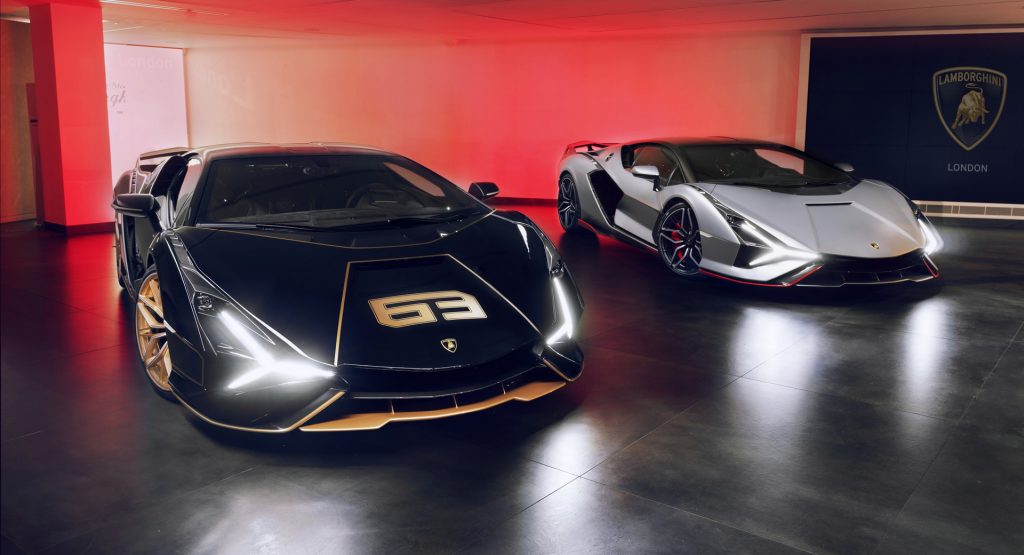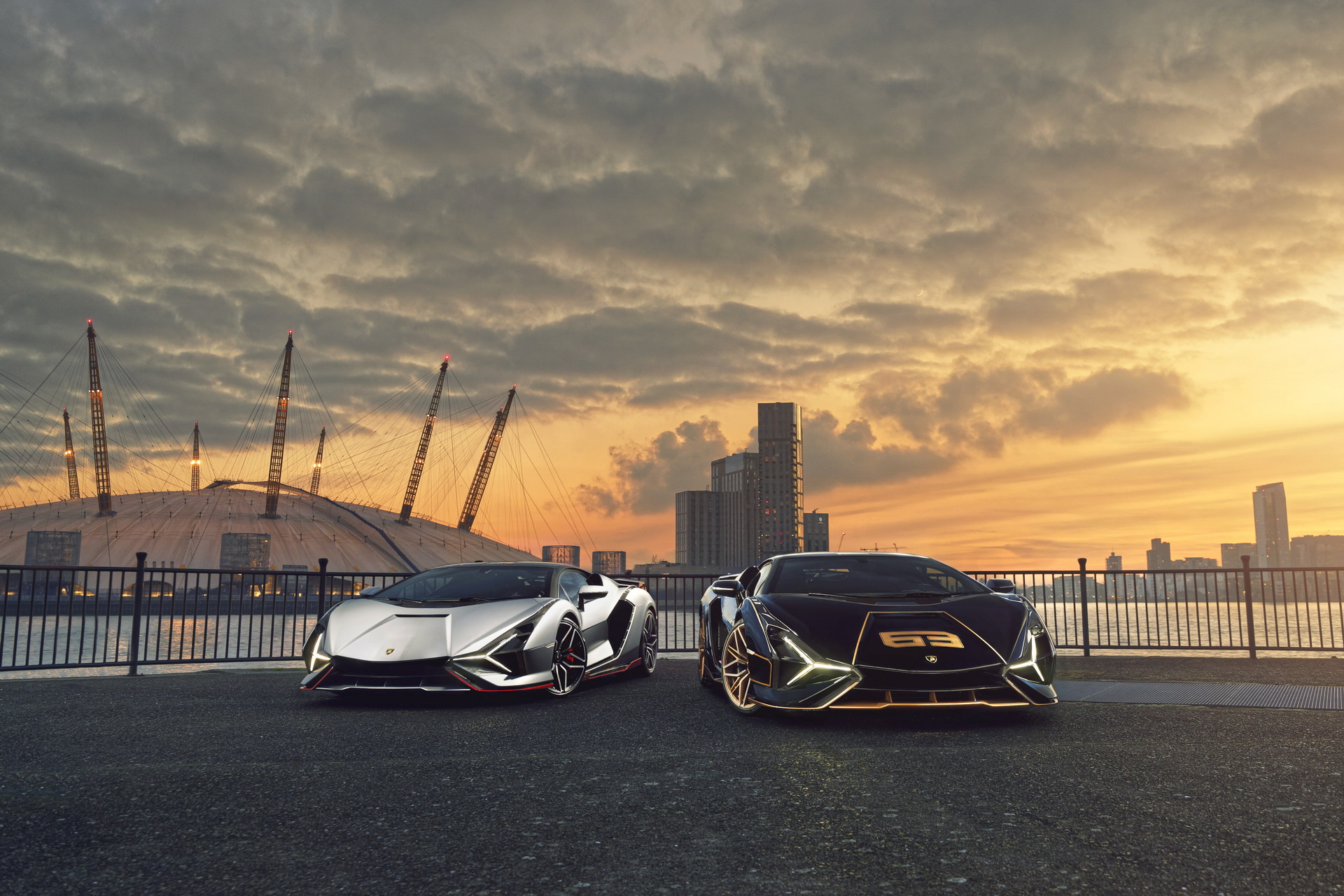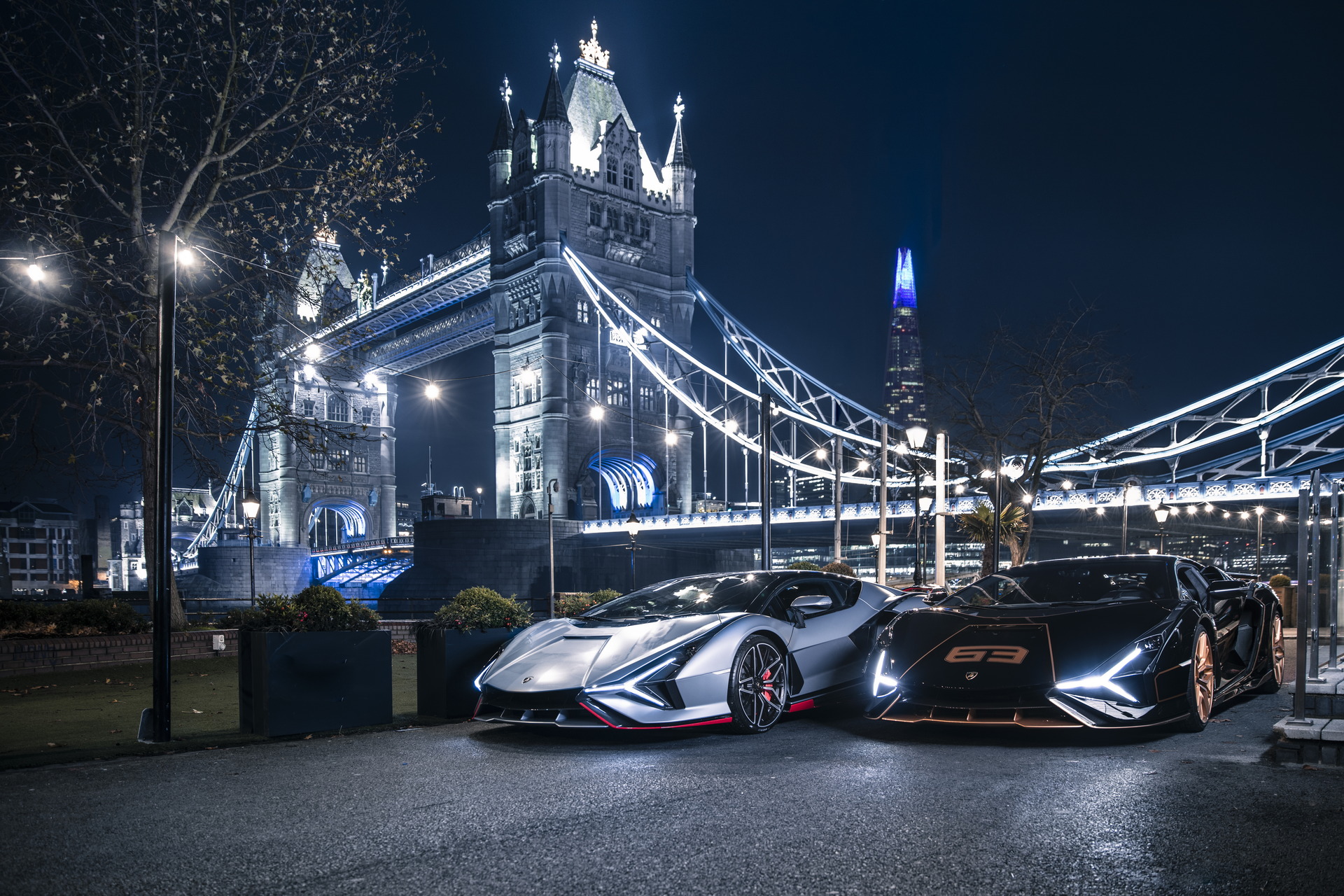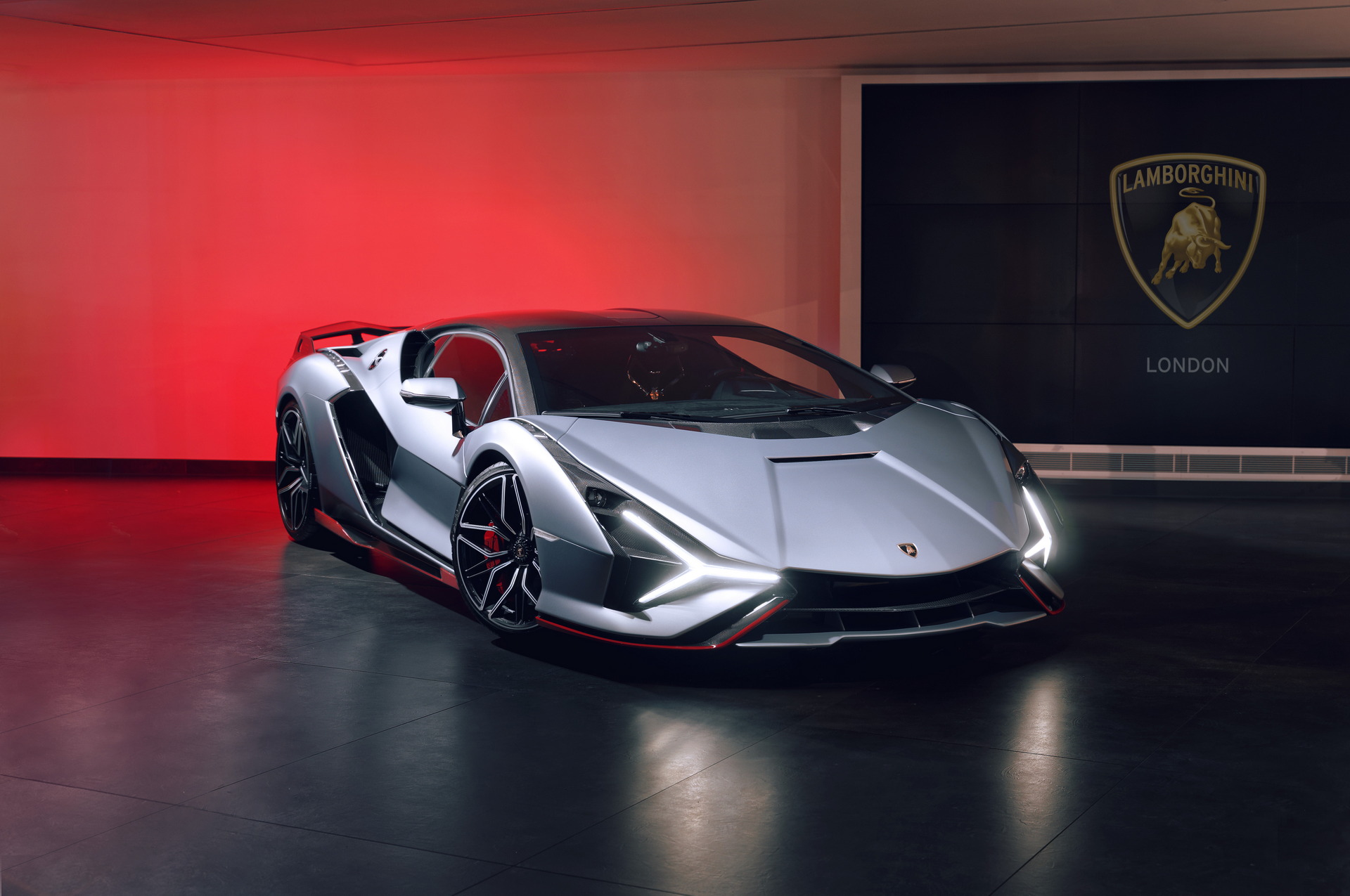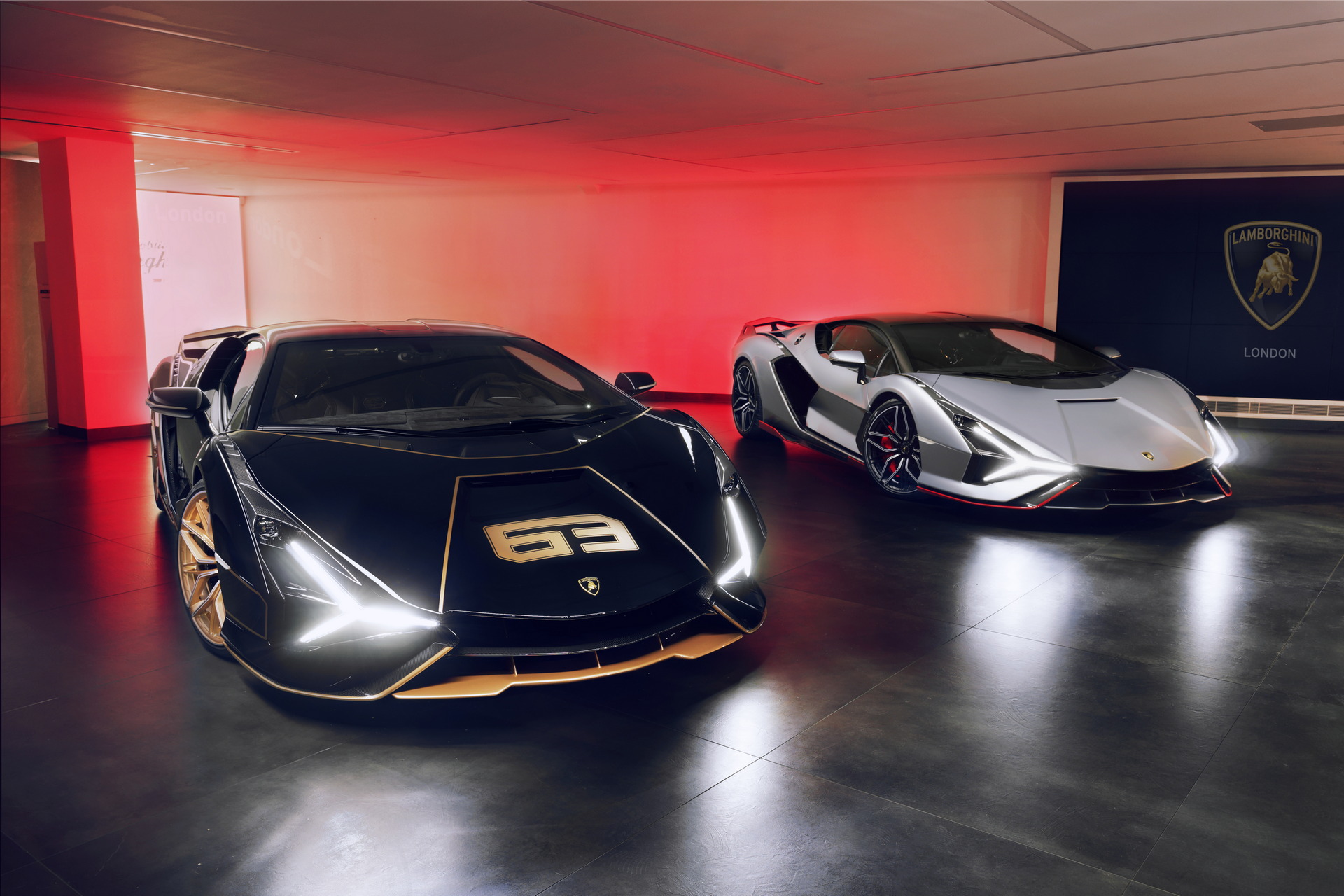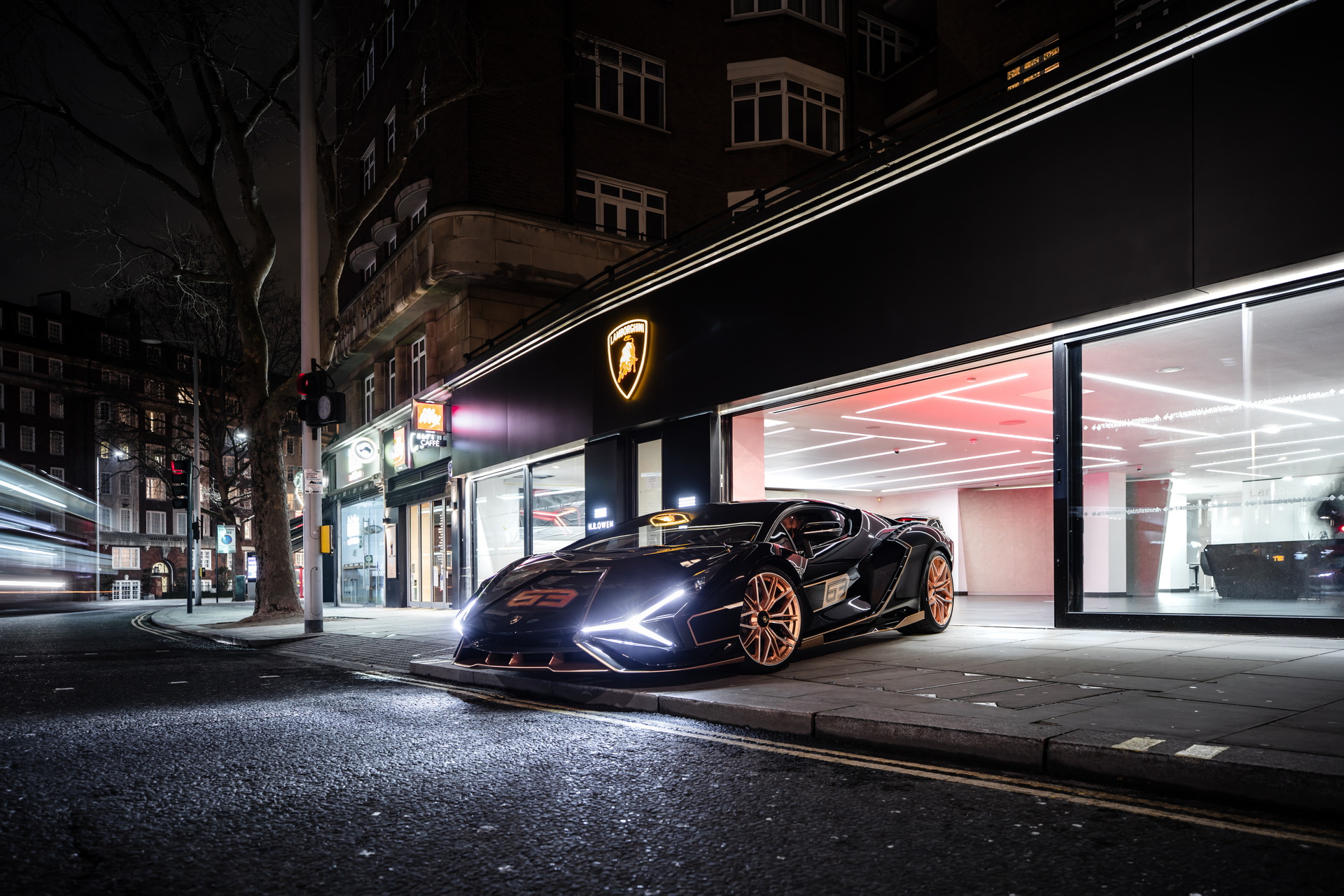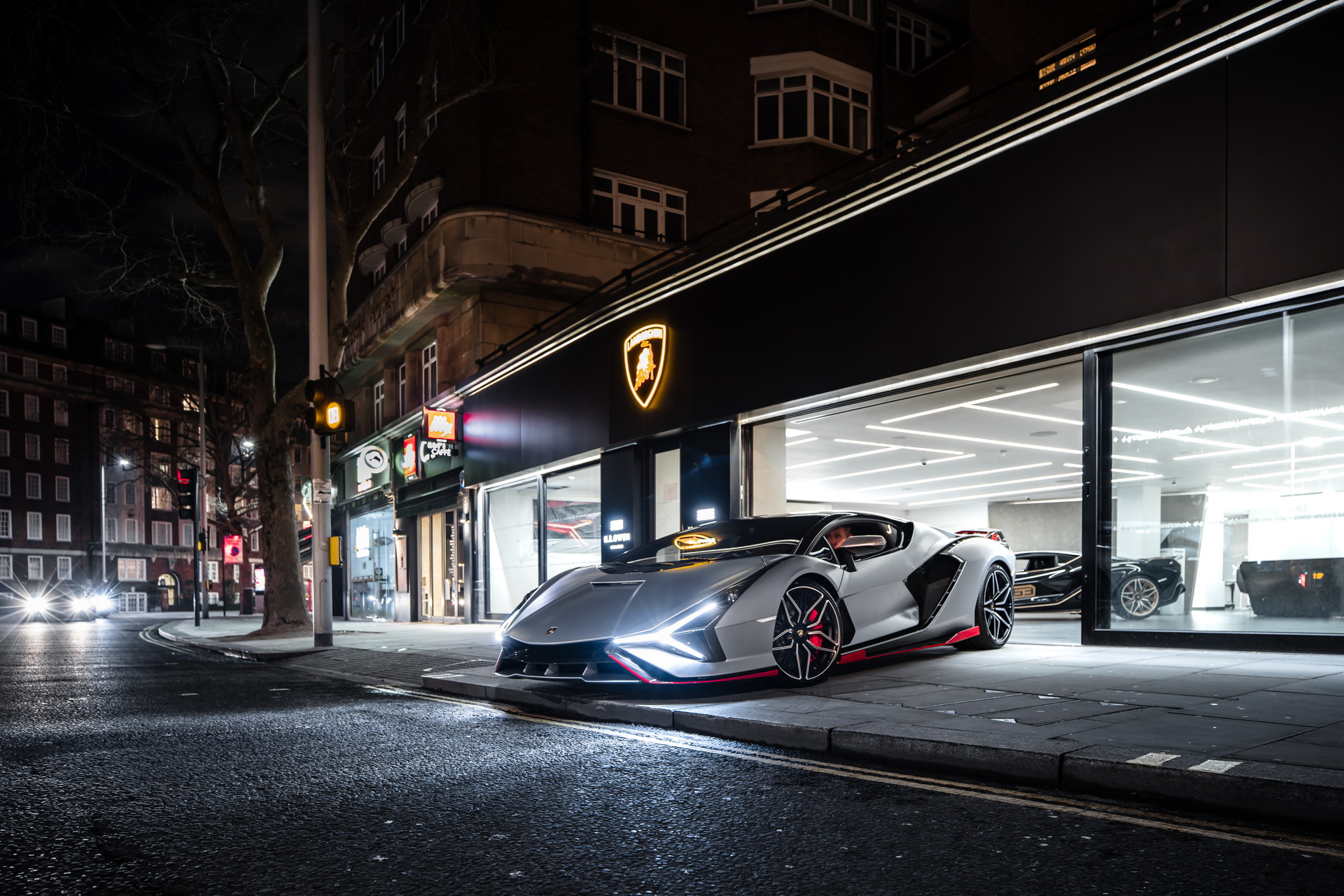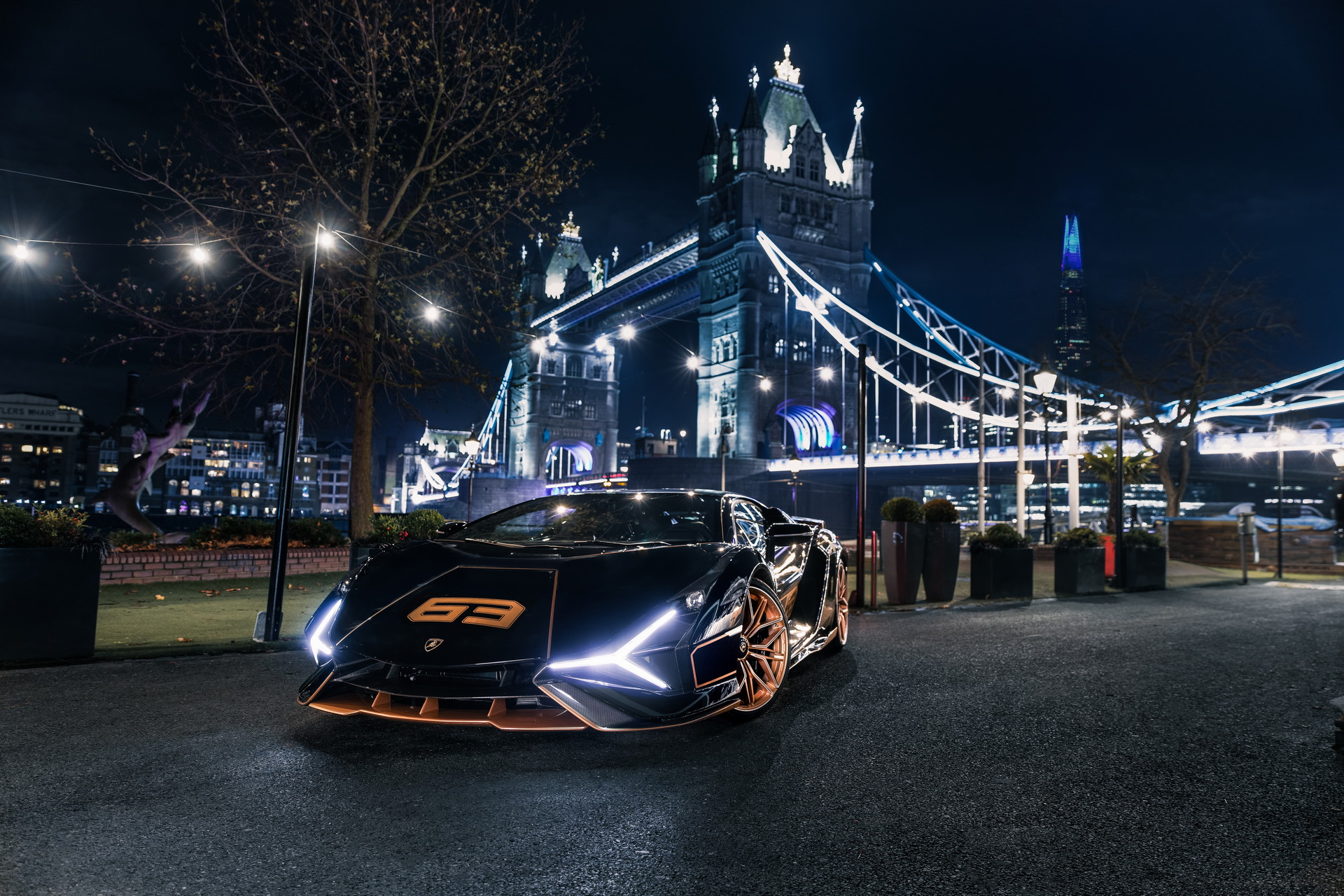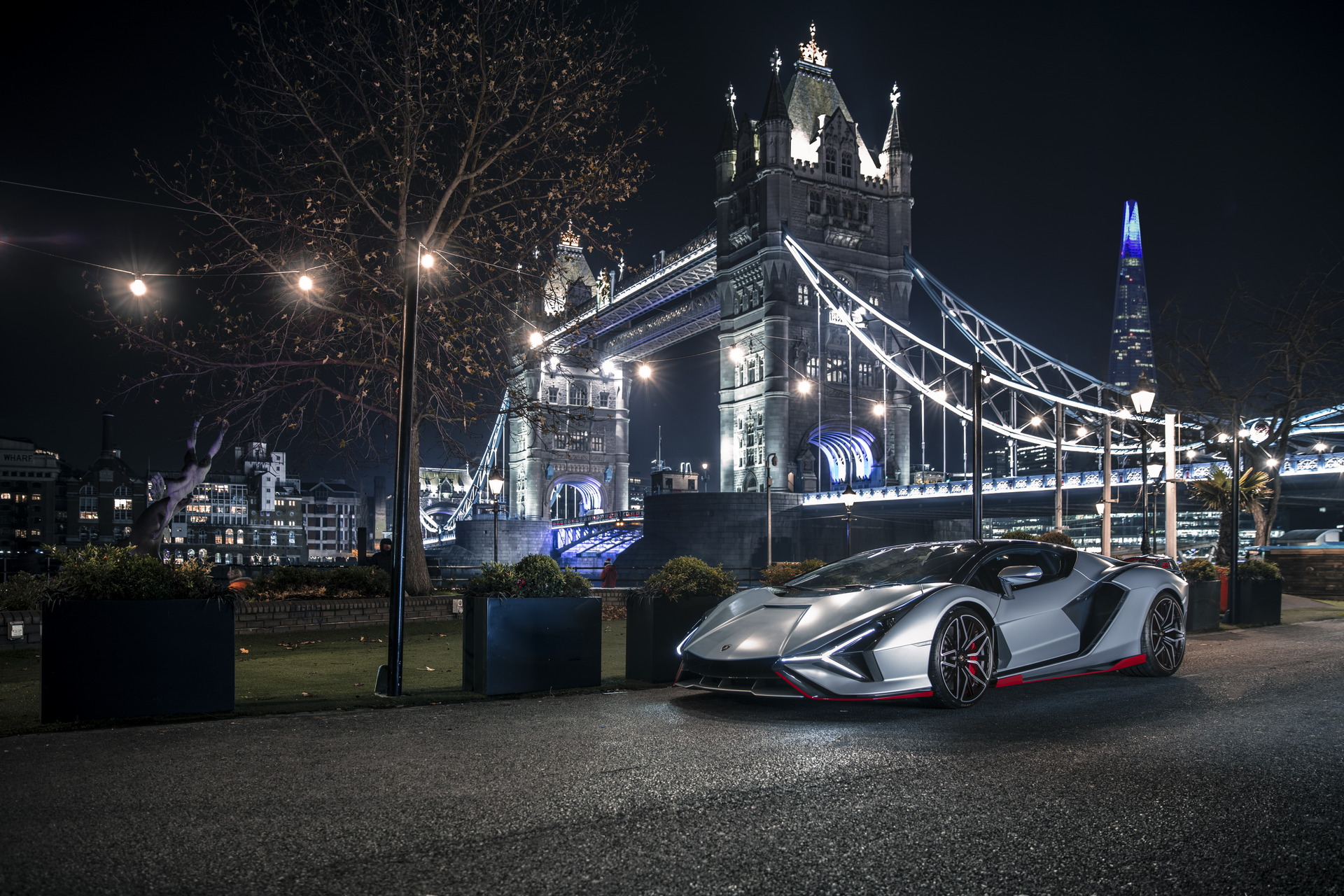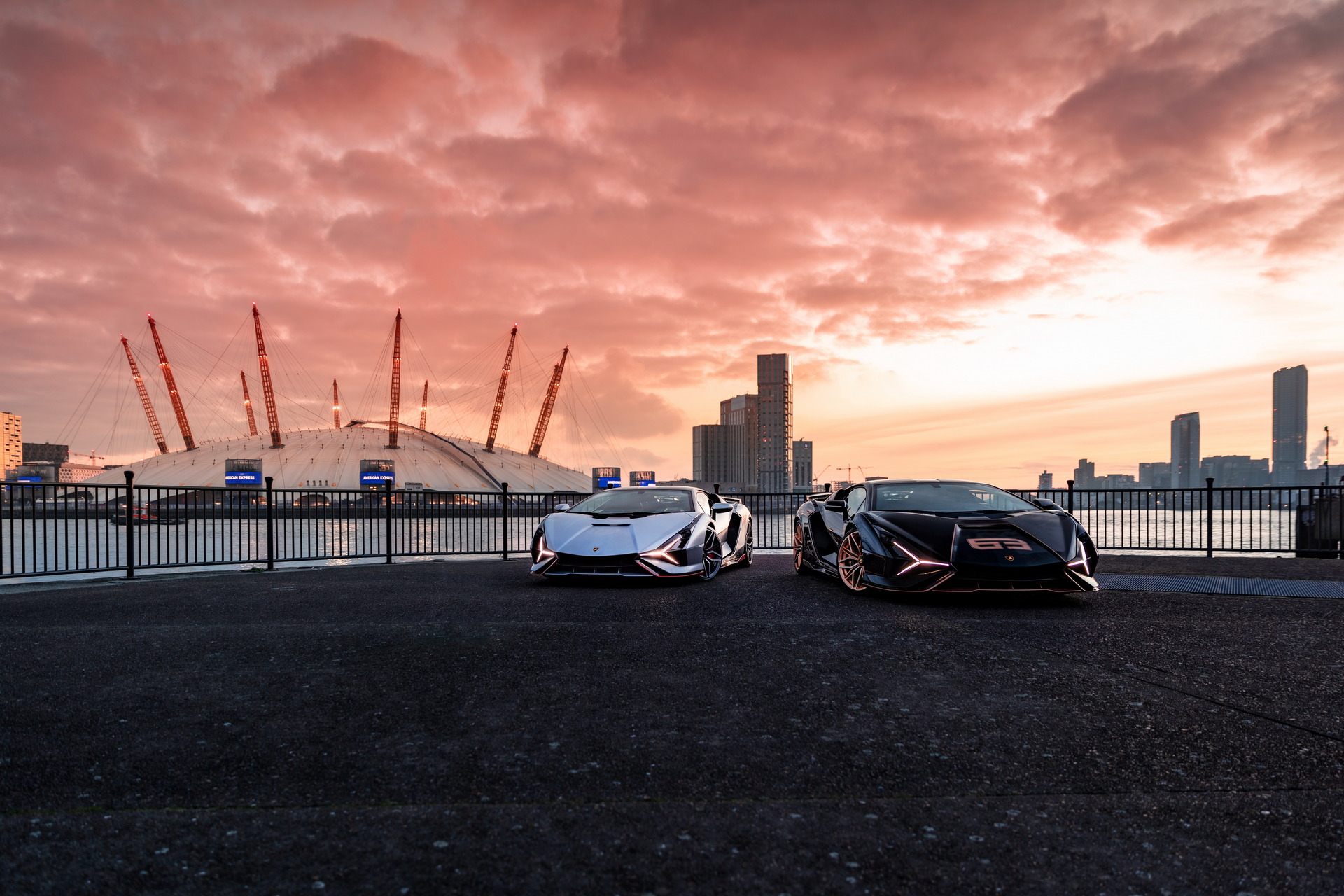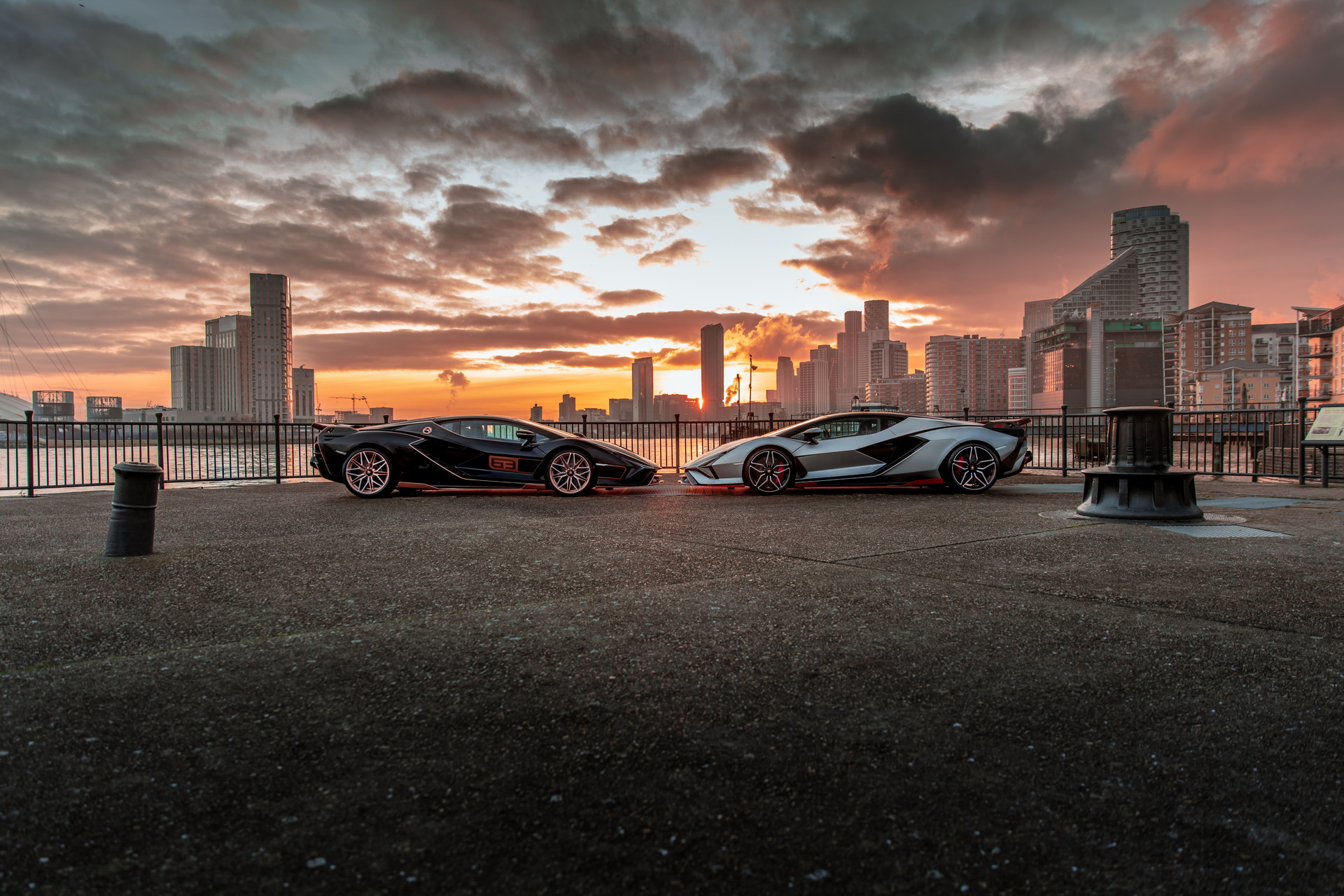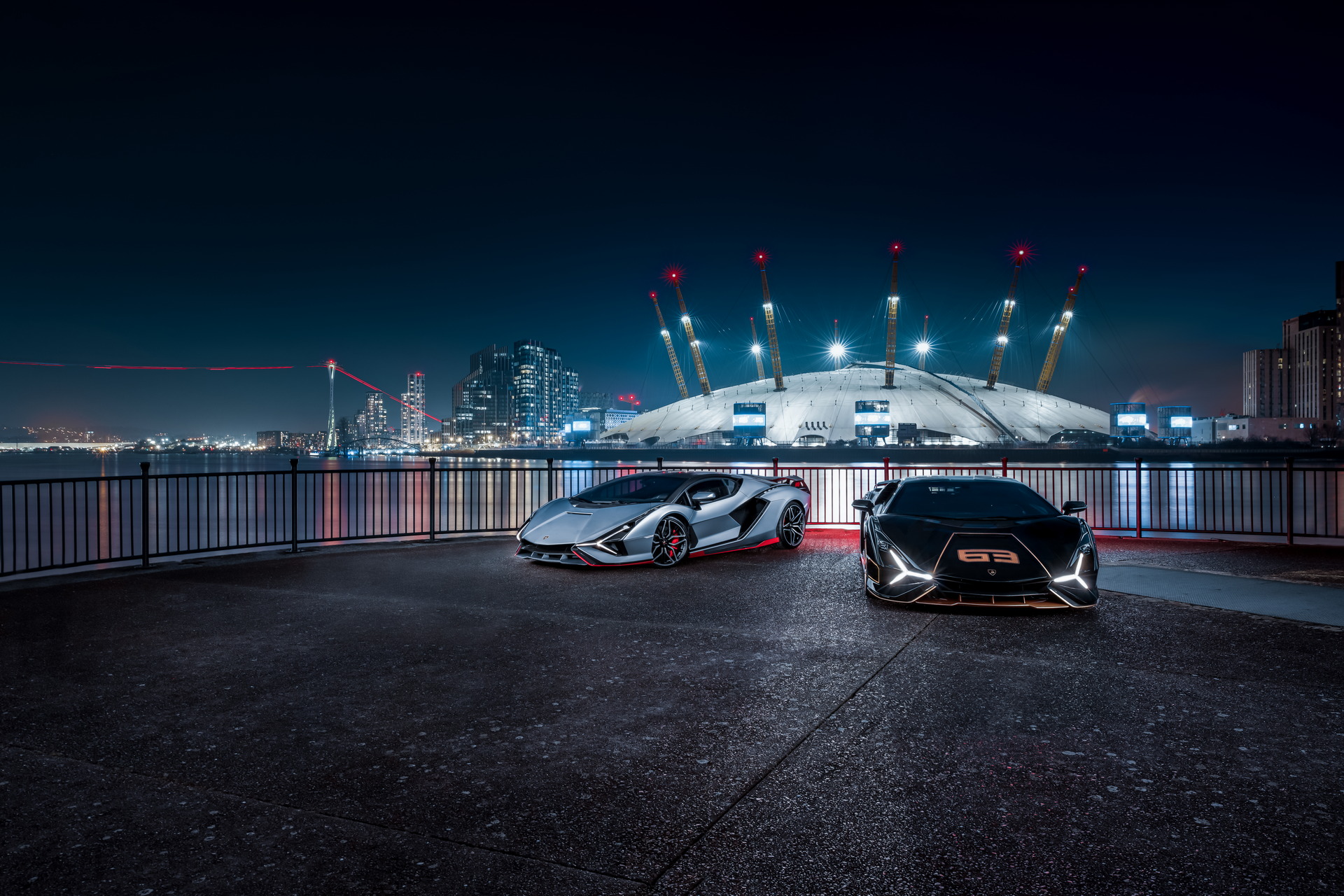The first examples of the ultra-limited Lamborghini Sian have been slowly making their way to dealerships across the globe. Now, Lamborghini London, the UK’s most successful Lamborghini dealership, has taken delivery of not one, but two.
Even more impressive is the fact that out of only 63 built for the entire world, only three are bound for the UK, and Lamborghini London will be selling all of them. The dealership felt this achievement was great enough to warrant a celebration, so they had one, in the form of a photoshoot with the two supercars at some of London’s most famous spots.
See Also: What Do You Think Of This Carbon Lamborghini Sian?
As for what they look like, both Sians were personalized through Lamborghini’s Ad Personam service. The darker of the bunch is finished in Nero Helene with Oro Electrum accents and carbon fiber trim. The interior matches this color scheme, being upholstered in Nero Ade leather with Oro Electrum stitching. The other Sian is painted in Grigio Nimbus with Rosso Mars details, and its interior is finished in Nero Ade with Rosso Alala highlights.
While many are quick to write off the Sian as just another Aventador with a body kit, according to Lamborghini, it’s much more than that. The car boasts some pretty impressive tech, most notably its supercapacitor for the hybrid system, which is the first ever fitted to a production car. It is extremely lightweight and can completely recharge every time the car brakes. Compare that to a traditional lithium-ion battery, which is three times heavier and three times less powerful for a unit of the same size and capacity, as per Lamborghini.
Read More: The Very First Lamborghini Sian Delivered In The U.S. Right In Time For The Holidays
Plus, in typical Lamborghini fashion, the Sian also has its fair share of impressive performance numbers. The car’s 6.5 liter V12, coupled with its 48-volt “e-motor,” produces a whopping 808 hp (819 PS / 602 kW) and 561 lb-ft (760 Nm) of torque, making it the most powerful Lamborghini to date. The sprint to 60 mph (100 km/h) takes 2.8 seconds, and top speed is reported to be north of 217 mph (350 km/h).



